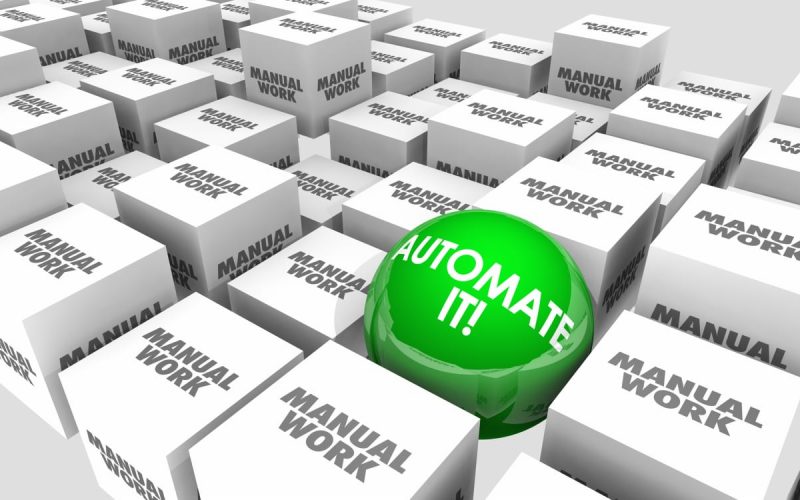In business, you’ll face fierce competition not only in sales but also in effectiveness, productivity, and efficiency. This is where business task automation comes in. If you don’t automate, there’s a huge chance that your competitors are already doing so, pushing you out of business. Fortunately, automation is now widely available for most industries and business functions, including the field service industry.
Businesses of all sizes can create automated tasks to enhance efficiency, productivity, and, most importantly, profitability. However, task automation can go wrong if not approached in the right way. Fortunately, this article shares tips on how to get task automation right and create a more efficient and profitable business.
#1. Start By Laying Out Your Daily Tasks
When automating tasks in your field service business, for example, you need to identify and list the tasks you undertake daily. When creating this list, include some details of the tasks. In addition, it would also help if you indicated how long each task takes on average and the frequency of the task. The frequency could be hourly, daily, weekly, monthly, and so on. Ensure each department carries out this exercise.
Afterward, identify areas where automation can come in and the tools you may need to accomplish the tasks efficiently. Check to see which tasks you’ve covered and those you haven’t. Think about what an ideal solution would be and the result you want.
Once each business function and the task have been identified and the ideal solutions presented, hold a meeting with your team and come up with suggestions for possible solutions.
#2. Research and Explore Automation Tools
Now that you’ve determined the areas and tasks that need automation, you can now start researching suitable tools. Identify what you can use depending on your needs. Specialized tools such as Jobber’s plumbing software are specifically designed to help with this process for field service-based businesses. You can find apps designed to support every kind of industry so invest the time in finding the right one. Smart new technology can not only streamline your task automation in this way, but also help you with scheduling, creating and tracking quotes and estimates, and managing customer relationships, to name but a few.
If you already have other tools and software, ensure that the tools you’ve picked can easily integrate with one another. You want to get a solution that fits with your existing infrastructure and seamlessly integrates without rendering your legacy software and tools useless. Unless your aim is to overhaul your entire business tech and retrain your staff, your automation technology must integrate with other applications and tools.
Besides, you can’t effectively automate workflows when systems aren’t communicating with each other. If your quote dashboard doesn’t link with the accounting software, you won’t effectively track and follow up the quotes. Although this process may take a while, it’s necessary. You want to ensure that the solution you come up with will be the most suitable for your business.
#3. Set your Automation Targets
It wouldn’t be wise to spend money on automation tools, invest time in learning, and create a new system that won’t profit your business. That’s why it’s essential to set specific targets to help you measure the progress, identify gaps, and refine the process. Task automation can have many goals. Yours may be to improve productivity and free up time for your team to do other tasks.
For instance, you can automate quote creation and tracking. This will help you improve productivity, but, most importantly, you’ll free up time that your team can spend on other tasks. You also need to know what to do with the freed-up time that adds value to the business. Create specific targets and use them to measure the success of the process automation. When you have defined targets, you’ll be able to gauge the impact of automation.
#4. Keep Your Vision Whole
While it’s essential to focus on what technology and automating business processes can do, don’t forget to focus on the business. When the focus is too much on the technology and not the business, failure is imminent. Automation is by no means only a technological problem. Before you commit to any technology platform, look at the business as a whole, including your customers and employees.
While you seek to enhance workflow, ensure to make customer service better and be on the same page with your team as well. Automating any part of your business must serve both short and long-term goals. As the business owner, you hold the key to keeping the business vision alive. Don’t allow technology and automation to dissuade you from what you set out to achieve. Ensure everything fits well into your business vision.
#5. Start Small and Build from there
Having to deal with plenty of new automation, some of which may be complex, can be challenging. But smaller bites are easy to chew, and they make better digestion. With that concept, the best way to automate your business is by starting small and building on it with time. Start with one task, track results, refine it, and ensure it’s working as intended before moving to the next.
Additionally, with one automation at a time, you’ll have a more gradual learning curve, making it easier and faster for your team to adjust. While keeping your vision in mind, break the automation process into manageable deliveries. In the beginning, everybody wants to see and experience the small wins, which helps build confidence and acceptance of automation.
In addition, it’s easier to deal with any challenges that may arise along the way. There are things you may not be able to anticipate and can only deal with as they come. Keeping the milestones manageable is part of getting your business automation right.
#6. Evaluate and Test your Tools
You can’t stop after the automation is up and running. You need to evaluate and test the system to ensure it’s doing what you intended it to do. Ensure that the areas you’ve automated are actually adding value to your business, saving time for your team, and making them efficient and productive.
Ensure that everything is running well right from the start and that automation hasn’t resulted in other workflow issues and backlogs.
Is Automation Right for Your Business?
Automation is a quick approach to boost efficiency and productivity in any sector. Automation technologies boost both corporate and employee performance, so they are no longer a “nice-to-have” technology.
What Are the Best Business Processes to Automate?
Customer service, finances, sales, marketing, supply chain management, human resources, inventory management, order management, document management, and analytics are the top ten corporate operations to automate.
Is Automation Right for Your Business?
Automation is a quick approach to boost efficiency and productivity in any sector. Automation technologies boost both corporate and employee performance, so they are no longer a “nice-to-have” technology.
How Do People Automate Tasks?
Individual tasks can be created, assigned to team members, and tracked using tools like Hive or ClickUp. You can also use automated rules to transfer jobs across stages or boards depending on predefined criteria.
Conclusion
Automating your business can help you remain competitive and improve efficiency and productivity. However, this is only possible if you get it right. Getting it right means knowing your tasks and what you want to get out of automation. Ensure you get the right automation tools, keep your vision in mind, start small, and don’t forget to track your progress.
Related Articles
- Marketing Automation: Best Marketing Automation Software and Tools
- Automating Accounts Payable Process: What You Should Know Before Automation
- Project Time Management: Processes, Tools & Software for Effective Management
- TASK MANAGEMENT SOFTWARE: 25 Best Task Management Software Solution
- Benefits of Accounting Process Automation for Business






